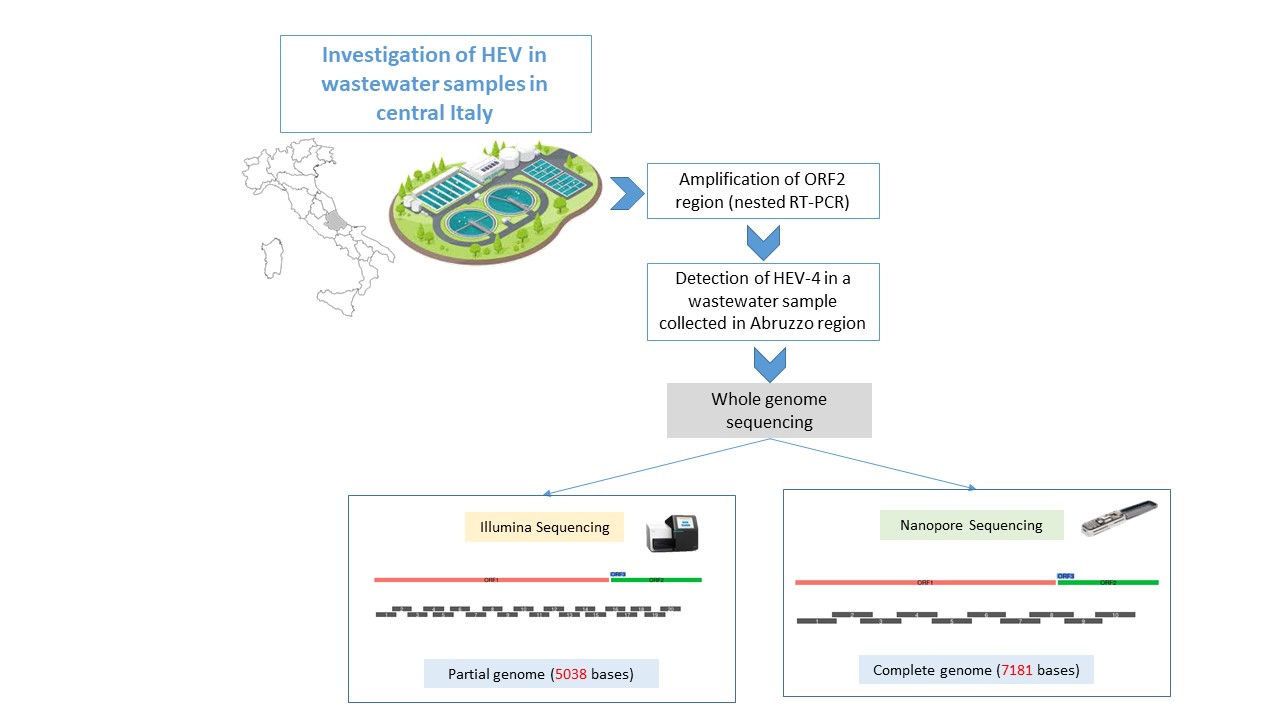Hepatitis E virus (HEV) is a global threat, causing both asymptomatic and severe liver diseases. Particularly, pregnant women and individuals with chronic liver diseases face elevated mortality rates. In Europe, HEV genotype 3 (HEV-3) is common, while sporadic cases of HEV-4 occur. In Italy, HEV-4 is extremely rare, with only one documented outbreak in 2011 and one detection event in a pig herd in 2013. A recent study reported the detection and full genome sequencing of HEV-4 subtype d in a wastewater sample from central Italy, in the absence of reported clinical cases.
In this study, Veneri and collaborators investigated the occurrence of HEV in wastewater as part of a project focusing on foodborne and waterborne transmission of HEV in the Abruzzo region (central Italy), which is recognized as a hotspot for virus circulation. During the course of this study, the presence of HEV genotype 4 was detected by nested PCR and Sanger sequencing in a wastewater sample collected in San Salvo, in the province of Chieti. This discovery is of particular interest due to the infrequent circulation of this genotype in Italy. Two distinct Next-Generation Sequencing (NGS) methods (Illumina and Oxford Nanopore Technologies, ONT) were therefore employed in an attempt to fully sequence the entire genome of the virus.
Phylogenetic analysis confirmed the presence of HEV genotype 4d in the wastewater sample. Illumina sequencing partially covered the genome, while ONT sequencing provided a continuous sequence of 6783 bases. Targeted PCR amplification of the 3’-end followed by Sanger sequencing was used to complete the genome, resulting in a full-length sequence of 7181 bases. The sequence obtained displayed 95.74% nucleotide identity with a Paslahepevirus balayani isolate from China. The sequence is available in the GenBank under accession number OR734985.
This study reveals the occurrence of HEV-4d in central Italy, despite the absence of clinical cases, highlighting the significance of wastewater monitoring for infectious agents. The findings underscore the effectiveness of wastewater epidemiology as a complement to clinical surveillance in understanding viral epidemiology. The authors of this study hypothesised that this isolated detection may be associated with an individual or a small cluster of infection, possibly with a history of travel to regions where HEV-4 is prevalent. Indeed, further sampling at the same and nearby water treatment plants failed to reveal any additional positive results for HEV-4. The successful sequencing of HEV-4d from a wastewater sample, using advanced technologies, contributes to molecular epidemiological analysis and improves our understanding of viral circulation in specific regions.
Article Reference: Veneri, C., Brandtner, D., Mancini, P., Bonanno Ferraro, G., Iaconelli, M., Del Giudice, C., Ciccaglione, A. R., Bruni, R., Equestre, M., Marcantonio, C., Suffredini, E., & La Rosa, G. (2024). Detection and full genomic sequencing of rare hepatitis E virus genotype 4d in Italian wastewater, undetected by clinical surveillance. The Science of the total environment, 913, 169698. https://doi.org/10.1016/j.scitotenv.2023.169698

